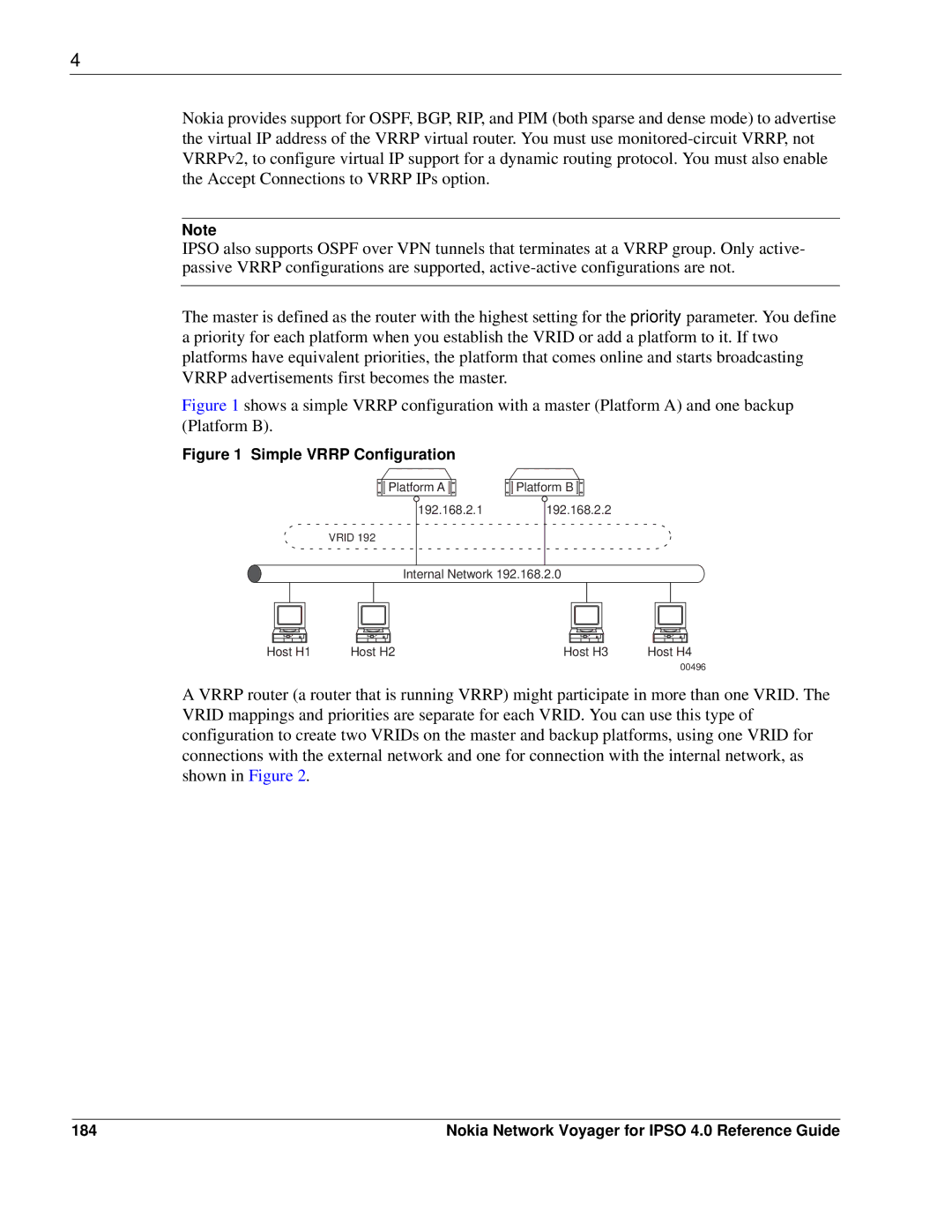
4
Nokia provides support for OSPF, BGP, RIP, and PIM (both sparse and dense mode) to advertise the virtual IP address of the VRRP virtual router. You must use
Note
IPSO also supports OSPF over VPN tunnels that terminates at a VRRP group. Only active- passive VRRP configurations are supported,
The master is defined as the router with the highest setting for the priority parameter. You define a priority for each platform when you establish the VRID or add a platform to it. If two platforms have equivalent priorities, the platform that comes online and starts broadcasting VRRP advertisements first becomes the master.
Figure 1 shows a simple VRRP configuration with a master (Platform A) and one backup (Platform B).
Figure 1 Simple VRRP Configuration
Platform A | Platform B |
192.168.2.1 | 192.168.2.2 |
VRID 192 |
|
Internal Network 192.168.2.0
Host H1 | Host H2 | Host H3 | Host H4 |
|
|
| 00496 |
A VRRP router (a router that is running VRRP) might participate in more than one VRID. The VRID mappings and priorities are separate for each VRID. You can use this type of configuration to create two VRIDs on the master and backup platforms, using one VRID for connections with the external network and one for connection with the internal network, as shown in Figure 2.
184 | Nokia Network Voyager for IPSO 4.0 Reference Guide |
